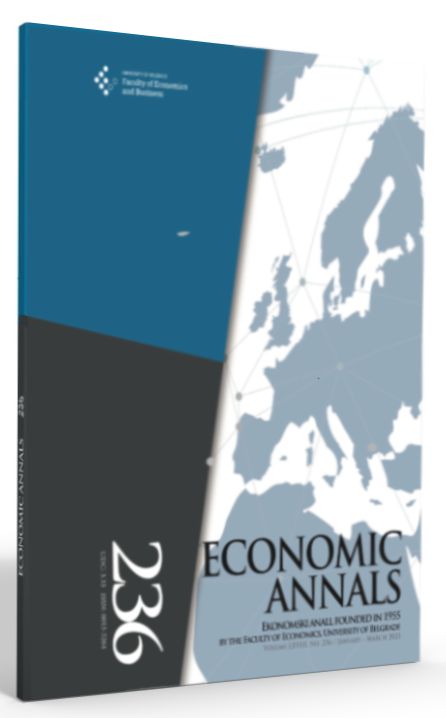Monetary policy and economic growth in Nigeria: Evidence from bounds and Bayer-Hanck cointegration techniques
Monetary policy and economic growth in Nigeria: Evidence from bounds and Bayer-Hanck cointegration techniques
Author(s): Kingsley Imandojemu, Bosede Ngozi Adeleye, Babatunde AinaSubject(s): Economy, National Economy, Economic policy, Socio-Economic Research
Published by: Економски факултет Универзитета у Београду
Keywords: monetary policy; economic growth; interest rate
Summary/Abstract: This paper contributes to the monetary policy-economic growth debate by investigating whether monetary policy stimulates economic growth in Nigeria. Using time series data from 1970 to 2018 and deploying the autoregressive distributed lag (ARDL) model, bounds and the Bayer- Hanck (2013) cointegration tests, evidence from the main and robustness checks show that (1) a significant long-run association exists, and (2) a percentage increase in the monetary policy rate results in 0.055 percentage decline in economic growth, on average, ceteris paribus. In other words, these findings confirm that a statistically significant inverse relation exists between monetary policy and economic growth in Nigeria. Trade openness also exerts asymmetric contemporaneous (0.094) and lag (-0.059) impacts on economic growth at the 1% and 5% significance levels, respectively. Similarly, the inflation rate contemporaneously reduces economic growth (-0.002) at the 1% significance level while its lag impacts are asymmetric and statistically significant at the 10% and 5% levels, respectively. Policy recommendations are discussed.
Journal: Economic Annals
- Issue Year: 68/2023
- Issue No: 236
- Page Range: 81-103
- Page Count: 23
- Language: English

